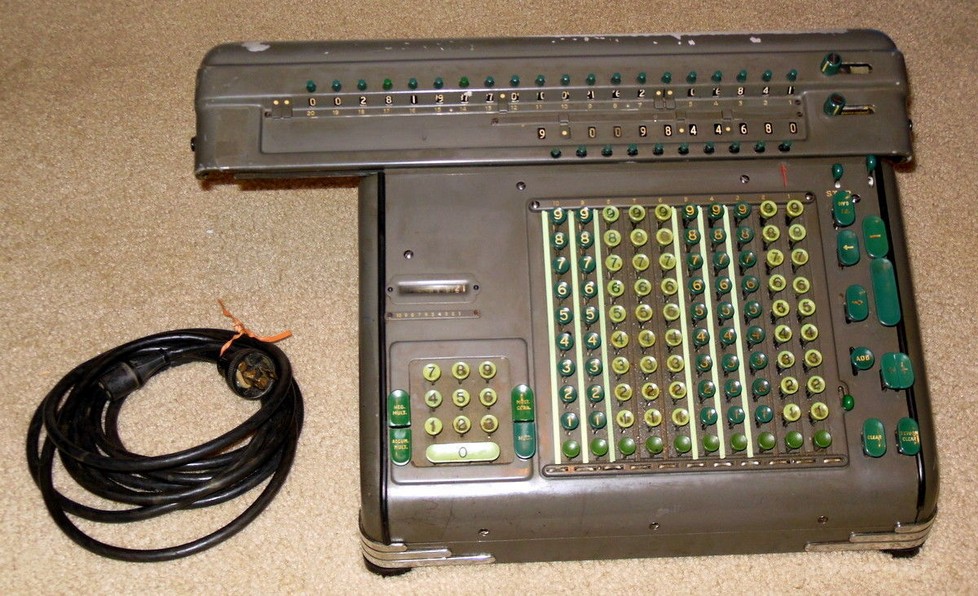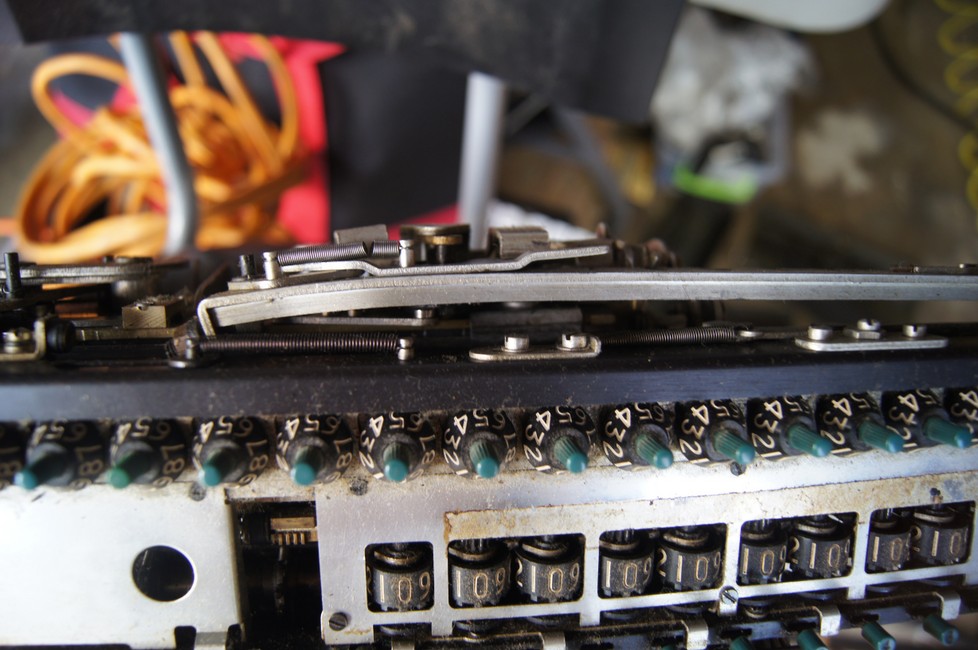Virtual Museum > The early ones > Electro-Mechanical
Friden ST10
Friden was a manufacturer of Typewriters and calculators. They are very well known for their electro-mechanical calculators, that were the top of the line for mechanical calculations.
When the electronic arrived in the 1960's, these mechanical calculators became almost obsolete, because they were bulky, heavy, and noisy.
However they remain a marvel of mechanical design, and with the help of a small electric motor, they perform calculations quickly and still amaze anyone looking at them.
I recently purchased a Model ST-10, and it came with the following description: "makes noise like it wants to do something but I think some buttons stuck. Unit has lost some paint" .

Well, I took the chance at working on an old mechanical machine and when I received it, it did, indeed, make some noise, but nothing happened. My first conclusion: the motor must still works.
I opened the cover and discovered the first issue: The top of the carriage does not seem to have a nice straight line.

The good thing about a mechanical calculator, is that you can fix it using a hammer and pliers. Being careful, I bent this piece back to its normal shape (straight), and re-installed everything. To my surprise, the calculator started to work a little bit better. I was now able to move the carriage right or left.
I tried a couple of operations, but found that any multiplication with 3 digits or more was not working. Oh well, I removed the carriage again and inspected the rails. It's not easy to see on the picture, but I added a red line to show the normal rail (straight), and an arrow to point at the place where it was obviously bent

Again, with care, I used a small hammer and performed a little surgery on this rail. In the end, it was acceptable, and the carriage moved much much smoother from left to right.
I pass on several buttons that were bent too, and finally I ended up with a working machine, as you can see in the small video below, where I perform a multiplication:
When the electronic arrived in the 1960's, these mechanical calculators became almost obsolete, because they were bulky, heavy, and noisy.
However they remain a marvel of mechanical design, and with the help of a small electric motor, they perform calculations quickly and still amaze anyone looking at them.
I recently purchased a Model ST-

Well, I took the chance at working on an old mechanical machine and when I received it, it did, indeed, make some noise, but nothing happened. My first conclusion: the motor must still works.
I opened the cover and discovered the first issue: The top of the carriage does not seem to have a nice straight line.
The good thing about a mechanical calculator, is that you can fix it using a hammer and pliers. Being careful, I bent this piece back to its normal shape (straight), and re-
I tried a couple of operations, but found that any multiplication with 3 digits or more was not working. Oh well, I removed the carriage again and inspected the rails. It's not easy to see on the picture, but I added a red line to show the normal rail (straight), and an arrow to point at the place where it was obviously bent
Again, with care, I used a small hammer and performed a little surgery on this rail. In the end, it was acceptable, and the carriage moved much much smoother from left to right.
I pass on several buttons that were bent too, and finally I ended up with a working machine, as you can see in the small video below, where I perform a multiplication:
